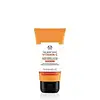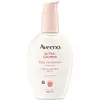What's inside
What's inside
 Key Ingredients
Key Ingredients

 Benefits
Benefits

 Concerns
Concerns

 Ingredients Side-by-side
Ingredients Side-by-side

Water
Skin ConditioningEthylhexyl Methoxycinnamate
UV AbsorberEthylhexyl Salicylate
UV AbsorberIsododecane
EmollientOctocrylene
UV AbsorberHydrogenated Polydecene
EmollientGlycerin
HumectantGlyceryl Stearate
EmollientArachidyl Alcohol
EmollientButyl Methoxydibenzoylmethane
UV AbsorberCaprylyl Glycol
EmollientBehenyl Alcohol
EmollientPEG-100 Stearate
Arachidyl Glucoside
EmulsifyingCetyl Alcohol
EmollientSesamum Indicum Seed Oil
EmollientTetrahexyldecyl Ascorbate
AntioxidantPhenoxyethanol
PreservativeAcrylamide/Ammonium Acrylate Copolymer
Parfum
MaskingXanthan Gum
EmulsifyingPolyisobutene
Dimethicone
EmollientMyrciaria Dubia Fruit Extract
Skin ConditioningSorbic Acid
PreservativeDisodium EDTA
Linalool
PerfumingLimonene
PerfumingPolysorbate 20
EmulsifyingSorbitan Isostearate
EmulsifyingBenzyl Benzoate
AntimicrobialCitral
PerfumingPotassium Sorbate
PreservativeHexyl Cinnamal
PerfumingCitronellol
PerfumingWater, Ethylhexyl Methoxycinnamate, Ethylhexyl Salicylate, Isododecane, Octocrylene, Hydrogenated Polydecene, Glycerin, Glyceryl Stearate, Arachidyl Alcohol, Butyl Methoxydibenzoylmethane, Caprylyl Glycol, Behenyl Alcohol, PEG-100 Stearate, Arachidyl Glucoside, Cetyl Alcohol, Sesamum Indicum Seed Oil, Tetrahexyldecyl Ascorbate, Phenoxyethanol, Acrylamide/Ammonium Acrylate Copolymer, Parfum, Xanthan Gum, Polyisobutene, Dimethicone, Myrciaria Dubia Fruit Extract, Sorbic Acid, Disodium EDTA, Linalool, Limonene, Polysorbate 20, Sorbitan Isostearate, Benzyl Benzoate, Citral, Potassium Sorbate, Hexyl Cinnamal, Citronellol
Butyl Methoxydibenzoylmethane 3%
UV AbsorberEthylhexyl Methoxycinnamate 7.5%
UV AbsorberEthylhexyl Salicylate 2%
UV AbsorberWater
Skin ConditioningC12-15 Alkyl Benzoate
AntimicrobialCetearyl Alcohol
EmollientDimethicone
EmollientCyclopentasiloxane
EmollientGlycerin
HumectantCyclohexasiloxane
EmollientArachidyl Alcohol
EmollientPhenyl Trimethicone
Skin ConditioningPhenoxyethanol
PreservativeCetearyl Glucoside
EmulsifyingPanthenol
Skin ConditioningBenzyl Alcohol
PerfumingEthylene/Acrylic Acid Copolymer
Emulsion StabilisingChrysanthemum Parthenium Extract
Skin ConditioningBehenyl Alcohol
EmollientSteareth-2
EmulsifyingSodium Cocoyl Amino Acids
CleansingSteareth-21
CleansingParfum
MaskingPolyacrylamide
Arachidyl Glucoside
EmulsifyingDisodium EDTA
Methylparaben
PreservativeC13-14 Isoparaffin
EmollientPentaerythrityl Tetra-Di-T-Butyl Hydroxyhydrocinnamate
AntioxidantSarcosine
Skin ConditioningLaureth-7
EmulsifyingEthylparaben
PreservativeButylparaben
MaskingPropylparaben
PreservativeIsobutylparaben
AntimicrobialIodopropynyl Butylcarbamate
PreservativePotassium Aspartate
Skin ConditioningMagnesium Aspartate
Skin ConditioningButyl Methoxydibenzoylmethane 3%, Ethylhexyl Methoxycinnamate 7.5%, Ethylhexyl Salicylate 2%, Water, C12-15 Alkyl Benzoate, Cetearyl Alcohol, Dimethicone, Cyclopentasiloxane, Glycerin, Cyclohexasiloxane, Arachidyl Alcohol, Phenyl Trimethicone, Phenoxyethanol, Cetearyl Glucoside, Panthenol, Benzyl Alcohol, Ethylene/Acrylic Acid Copolymer, Chrysanthemum Parthenium Extract, Behenyl Alcohol, Steareth-2, Sodium Cocoyl Amino Acids, Steareth-21, Parfum, Polyacrylamide, Arachidyl Glucoside, Disodium EDTA, Methylparaben, C13-14 Isoparaffin, Pentaerythrityl Tetra-Di-T-Butyl Hydroxyhydrocinnamate, Sarcosine, Laureth-7, Ethylparaben, Butylparaben, Propylparaben, Isobutylparaben, Iodopropynyl Butylcarbamate, Potassium Aspartate, Magnesium Aspartate
Ingredients Explained
These ingredients are found in both products.
Ingredients higher up in an ingredient list are typically present in a larger amount.
Arachidyl Alcohol is a fatty alcohol made from peanut oil. It is an emollient, emulsifier, and thickener.
You'll most likely find this ingredient as an emulsifier in water-based cosmetics.
We don't have a description for Arachidyl Glucoside yet.
Behenyl Alcohol is a type of fatty alcohol (these are different from the drying, solvent alcohols).
Fatty Alcohols have hydrating properties and are most often used as an emollient or to thicken a product. They are usually derived from natural fats and oils; behenyl alcohol is derived from the fats of vegetable oils.
Emollients help keep your skin soft and hydrated by creating a film that traps moisture in.
In 2000, Behenyl Alcohol was approved by the US as medicine to reduce the duration of cold sores.
Learn more about Behenyl AlcoholAlso known as Avobenzone, this ingredient is a chemical sunscreen filter that provides protection in the UV-A range.
Avobenzone is globally approved and is the most commonly used UV-A filter in the world.
Studies have found that avobenzone becomes ineffective when exposed to UV light (it is not photostable; meaning that it breaks down in sunlight). Because of this, formulations that include avobenzone will usually contain stabilizers such as octocrylene.
However, some modern formulations (looking at you, EU!) are able to stabilize avobenzone by coating the molecules.
Avobenzone does not protect against the UV-B range, so it's important to check that the sunscreen you're using contains other UV filters that do!
The highest concentration of avobenzone permitted is 3% in the US, and 5% in the EU.
Learn more about Butyl MethoxydibenzoylmethaneDimethicone is a type of synthetic silicone created from natural materials such as quartz.
What it does:
Dimethicone comes in different viscosities:
Depending on the viscosity, dimethicone has different properties.
Ingredients lists don't always show which type is used, so we recommend reaching out to the brand if you have questions about the viscosity.
This ingredient is unlikely to cause irritation because it does not get absorbed into skin. However, people with silicone allergies should be careful about using this ingredient.
Note: Dimethicone may contribute to pilling. This is because it is not oil or water soluble, so pilling may occur when layered with products. When mixed with heavy oils in a formula, the outcome is also quite greasy.
Learn more about DimethiconeDisodium EDTA plays a role in making products more stable by aiding other preservatives.
It is a chelating agent, meaning it neutralizes metal ions that may be found in a product.
Disodium EDTA is a salt of edetic acid and is found to be safe in cosmetic ingredients.
Learn more about Disodium EDTAEthylhexyl Methoxycinnamate is an organic compound that provides UVB protection. It often goes by the more common name of octinoxate. It is created from methoxycinnamic acid and 2-ethylhexanol.
Ethylhexyl Methoxycinnamate absorbs UVB rays with wavelengths between 280-320 nm. UV absorbers protect your skin by using chemical reactions to convert UV rays into heat and energy.
UVB (290-320 nm) rays emit more energy than UVA rays. They are capable of damaging DNA, causing sunburns and are thought to be linked to skin cancer.
The state of Hawaii has banned sunscreens containing octinoxate due to its potential impact on coral reefs. More research is needed to bridge gaps in this research. The European Union allows higher levels of octinoxate in sunscreens than the US and Australia.
Ethylhexyl Methoxycinnamate is oil soluble. It is not stable and may lose efficacy when exposed to sunlight.
Learn more about Ethylhexyl MethoxycinnamateEthylhexyl Salicylate is an organic compound used to block UV rays. It primarily absorbs UVB rays but offers a small amount of UVA protection as well.
Commonly found in sunscreens, Ethylhexyl Salicylate is created from salicylic acid and 2-ethylhexanol. You might know salicylic acid as the effective acne fighter ingredient and BHA.
The ethylhexanol in this ingredient is a fatty alcohol and helps hydrate your skin, similar to oils. It is an emollient, which means it traps moisture into the skin.
According to manufacturers, Ethylhexyl Salicylate absorbs UV wavelength of 295-315 nm, with a peak absorption at 307-310 nm. UVA rays are linked to long term skin damage, such as hyperpigmentation. UVB rays emit more energy and are capable of damaging our DNA. UVB rays cause sunburn.
Learn more about Ethylhexyl SalicylateGlycerin is already naturally found in your skin. It helps moisturize and protect your skin.
A study from 2016 found glycerin to be more effective as a humectant than AHAs and hyaluronic acid.
As a humectant, it helps the skin stay hydrated by pulling moisture to your skin. The low molecular weight of glycerin allows it to pull moisture into the deeper layers of your skin.
Hydrated skin improves your skin barrier; Your skin barrier helps protect against irritants and bacteria.
Glycerin has also been found to have antimicrobial and antiviral properties. Due to these properties, glycerin is often used in wound and burn treatments.
In cosmetics, glycerin is usually derived from plants such as soybean or palm. However, it can also be sourced from animals, such as tallow or animal fat.
This ingredient is organic, colorless, odorless, and non-toxic.
Glycerin is the name for this ingredient in American English. British English uses Glycerol/Glycerine.
Learn more about GlycerinParfum is a catch-all term for an ingredient or more that is used to give a scent to products.
Also called "fragrance", this ingredient can be a blend of hundreds of chemicals or plant oils. This means every product with "fragrance" or "parfum" in the ingredients list is a different mixture.
For instance, Habanolide is a proprietary trade name for a specific aroma chemical. When used as a fragrance ingredient in cosmetics, most aroma chemicals fall under the broad labeling category of “FRAGRANCE” or “PARFUM” according to EU and US regulations.
The term 'parfum' or 'fragrance' is not regulated in many countries. In many cases, it is up to the brand to define this term.
For instance, many brands choose to label themselves as "fragrance-free" because they are not using synthetic fragrances. However, their products may still contain ingredients such as essential oils that are considered a fragrance by INCI standards.
One example is Calendula flower extract. Calendula is an essential oil that still imparts a scent or 'fragrance'.
Depending on the blend, the ingredients in the mixture can cause allergies and sensitivities on the skin. Some ingredients that are known EU allergens include linalool and citronellol.
Parfum can also be used to mask or cover an unpleasant scent.
The bottom line is: not all fragrances/parfum/ingredients are created equally. If you are worried about fragrances, we recommend taking a closer look at an ingredient. And of course, we always recommend speaking with a professional.
Learn more about ParfumPhenoxyethanol is a preservative that has germicide, antimicrobial, and aromatic properties. Studies show that phenoxyethanol can prevent microbial growth. By itself, it has a scent that is similar to that of a rose.
It's often used in formulations along with Caprylyl Glycol to preserve the shelf life of products.
Water. It's the most common cosmetic ingredient of all. You'll usually see it at the top of ingredient lists, meaning that it makes up the largest part of the product.
So why is it so popular? Water most often acts as a solvent - this means that it helps dissolve other ingredients into the formulation.
You'll also recognize water as that liquid we all need to stay alive. If you see this, drink a glass of water. Stay hydrated!
Learn more about Water